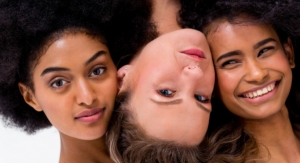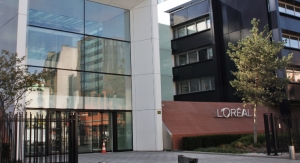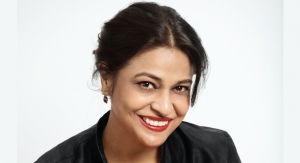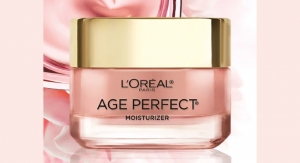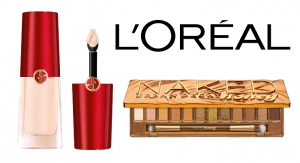France
www.loreal.com
Beauty Sales: $27.4 billion
Key Personnel: Jean-Paul Agon, chairman and chief executive officer; Laurent Attal, executive vice president, research and innovation; Nicolas Hieronimus, president, selective divisions; Brigitte Liberman, president, active cosmetics division; Marc Menesguen, president, consumer products division; Alexis Perakis-Valat, executive vice president, Asia Pacific; Alexandre Popoff, executive vice president, Eastern Europe; Frédéric Rozé, executive vice president, Americas; Geoff Skingsley, executive vice president, Africa and Middle East; An Verhulst-Santos, president professional products; Jochen Zaumseil, executive vice president, Western Europe; Lubomira Rochet, chief digital officer.
Major Products/Brands: Hair care, skin care, sun care, color cosmetics and fragrances sold under a variety of brand names in mass, professional, active and prestige channels, including Garnier, L’Oréal Paris, Le Club des Créateurs, Maybelline, SoftSheen-Carson, L’Oréal Professional, Kerastase, Redken, Matrix, Mizano, Shu Uemura Art of Hair, Keraskin Esthetics, Lancôme, Biotherm, Helena Rubenstein, Kiehl’s, Shu Uemura, Giorgio Armani, Ralph Lauren, Cacharel, Viktor & Rolf, Diesel, YSL Beauté, and Vichy, LaRoche-Posay, Innerve, SkinCeuticals, Sanoflore, NYX, Niely and Carol’s Daughter; and The Body Shop.
New Products: Pureology Smooth Perfection, Garnier Fructise Full & Plush, The Body Shop Drops of Youth Eye Concentrate, Maybelline Colossal Chaotic Lash Mascara, Lancôme Miracle Cushion Compact, La Roche-Posay Pigmentclar Eyes, Yves Saint Laurent Black Opium, Kiehl’s Hydro Plumping Serum, L’Oréal Professional Serioxyl, Redken Curvaceous Curl Products.
Comments: From 3D printing artificial human skin to combatting the “frizzies,” L’Oréal Group’s R&D department was hard at work in 2014, forging partnerships, generating patents and launching new products. L’Oréal was also one of the first to bring the Korean beauty sensation of the year—the liquid-in-cushion compact—to the U.S., with Lancôme’s Miracle Cushion Compact.
While a sluggish economy caused a lag during most of the year, strength came in the final quarter, giving a boost to annual sales totaling $27.4 billion, an increase of +1.8%. Like-for-like (i.e., based on a comparable structure and constant exchange rates), the sales trend of the L’Oréal Group was +3.7%.
L’Oréal brought the Korean beauty sensation of the year to the U.S., with Lancôme’s Miracle Cushion Liquid Cushion Compact.
In 2014, L’Oréal also focused on its digital transformation, and made strategic acquisitions such as Magic, NYX, Carol’s Daughter, Decléor, Carita and Niely, to complement its brand portfolio in key categories and regions of the world.
L’Oréal’s Makeup Genius app, which launched last year, has been particularly effective in China, where 4.7 million of its downloads have been—out of a total of 14 million in all. The app acts as a mirror and allows women to virtually try on cosmetics. Asmita Dubey, chief marketing officer for L’Oréal China, says “Girls in China can be shy to apply makeup if they are at the counter or if they are going out with friends … so for a girl like that to get a virtual experience and try some new looks, that’s something she wants to do.”
By operational division, Active Cosmetics achieved the greatest growth for the year (8.7%), followed by L’Oréal Luxe (7.1%).
In what L’Oréal described as a difficult market, the Professional Products Division recorded sales growth of +2.6% like-for-like and +2.0% based on reported figures. Conditions improved in Western Europe and in the New Markets. The United States, Brazil, India and Russia were the largest contributors to growth.
Launched in 1971—and still a bestseller—one tube of Maybelline’s famous pink & green Great Lash Mascara is sold every 1.9 seconds in the U.S.—and every 1.1 seconds globally.
Not surprisingly, with the prestige channel doing well, and a strong fourth quarter, L’Oréal Luxe recorded growth of +7.1% like-for-like and +5.7% based on reported figures. In 2014, Luxe outperformed the market in all its main zones, particularly in Europe, China, the Middle East and the U.S. E-commerce sales were also strong.
The Luxe makeup and women’s fragrance categories performed especially well. Yves Saint Laurent continued to grow double-digits in 2014, boosted by the women’s fragrance Black Opium, makeup and Asia. Giorgio Armani also had a very good year with its fragrance Sì and its makeup products. Lancôme’s La Vie est Belle proved to be the No. 1 selling fragrance in France, and No. 2 in Europe. Urban Decay, Kiehl’s, Clarisonic and Shu Uemura also boosted the Division’s growth.
In 2014, L’Oréal’s Active Cosmetics Division experienced excellent growth, with sales rising by +8.7% like-for-like and +5.3% based on reported figures, outperforming a healthy market. Sales were strong in all regions, with France, Brazil, and China especially of note.
By Geographic region, growth was strongest in Africa/Middle East (13.5%), followed by Latin America (10%).
Even with Western Europe’s flat market, and a highly competitive environment between mass-market retailers, L’Oréal’s growth came out at +2.4% like-for-like and +3.1% based on reported figures. Again, much of this growth came in the fourth quarter, and growth was good both in Northern and Southern Europe, particularly in Germany, the UK and Spain. L’Oréal Luxe and Active Cosmetics led the trend.
Following strong momentum in North America over the last few years, growth in 2014 slowed up due to the Consumer Products Division. Sales increased by +1.1% like-for-like and +0.6% based on reported figures. The Professional Products Division, Active Cosmetics and L’Oréal Luxe continued to expand, thanks to American brands Redken, SkinCeuticals, Urban Decay and Kiehl’s.
When the market improved in the second half, the Consumer Products Division showed increased sales, in particular from L’Oréal Paris. L’Oréal noted that its recent acquisitions of NYX and Carol’s Daughter complemented the Consumer Products Division. The New Markets all achieved growth.
In Asia-Pacific, L’Oréal recorded annual growth of +5.3% like-for-like and +4.1% based on reported figures. Excluding Japan, like-for-like growth came out at +5.8%. Kiehl’s, Yves Saint Laurent, Giorgio Armani, La Roche-Posay and Clarisonic were part of the growth mix. Magic, acquired in China in the first half of the year, achieved growth in the expanding beauty mask market.
L’Oreal’s Makeup Genius app has been particularly effective in China.
Eastern European sales registered +6.0% like-for-like and -6.3% based on reported figures, and grew much faster than the market, thanks to L’Oréal Luxe and the Professional Products Division. The Consumer Products Division achieved total market share in hair color and in deodorants. Active Cosmetics outperformed the market in Russia and Turkey.
Sales in Africa, Middle East rose by +13.5% like-for-like and +12.5% based on reported figures. All Divisions recorded double-digit growth and gained market share.
The Body Shop had what L’Oréal called “a satisfactory end to the year” in all its categories. The brand recorded growth of +1.6% like-for-like and +4.6% based on reported figures. The Americas’ region that now includes the Emporio Body Store outlets in Brazil, accounted for the highest growth.
News of Note
In December 2014, L’Oréal announced the acquisition of a start-up company that develops hair fiber optical reader technology for a long-term research program.
In February 2015, L’Oréal was named one of Fast Company’s “50 Most Innovative Companies in the World.”
This past May, L’Oréal Professionnel announced that its new Pro Fiber line was formulated to repair hair only where needed. “It’s the best formula ever achieved in the field of damaged hair,” said Patricia Pineau, L’Oréal’s scientific communications director.
Also in May, L’Oréal USA, announced a partnership with 3-D bioprinting company Organovo Holdings, Inc. to further the collaboration between Organovo’s proprietary NovoGen Bioprinting Platform and L’Oréal’s expertise in skin engineering to develop 3-D printed skin tissue for product evaluation and other areas of advanced research.
Sustainability is also a continued area of importance at the world’s leading beauty company, boosted by L’Oréal’s global sustainability program, Sharing Beauty With All. L’Oréal USA says that by 2020, 100% of products will have an environmental or social benefit—and 100% of strategic suppliers will be evaluated on their social and environmental performance. Carbon emissions, as well as water consumption and waste per finished product, will be cut by 60%.
Looking Ahead
In July, L’Oréal announced a “strong sales increase” of nearly 15%, topping out at about $14.2 billion. The Group reported a gradual improvement in sales in Western Europe and North America, and solid sales in New Markets excluding Brazil.
Commenting on the figures, Jean-Paul Agon, said: “At the end of June, our reported growth is the strongest recorded for the last twenty years, with a very positive currency effect.” He noted, “All divisions are growing.”
Agon projected acceleration in the second half, saying, “We are confident in our ability to outperform the beauty market and achieve a year of significant growth in both sales and profits.”
In early September, based on concerns about a slowdown in China, L’Oréal announced that it had lowered its forecast for this year to about 3.5% from a previous range of 3.5% to 4%.

